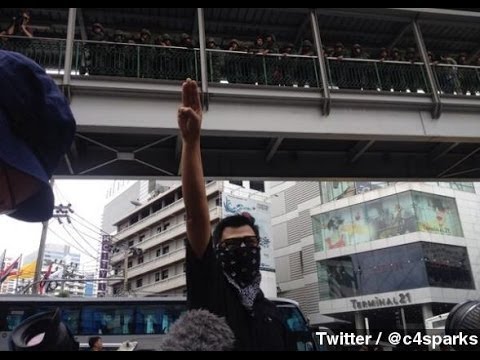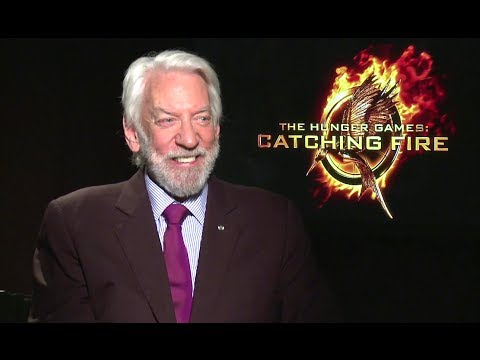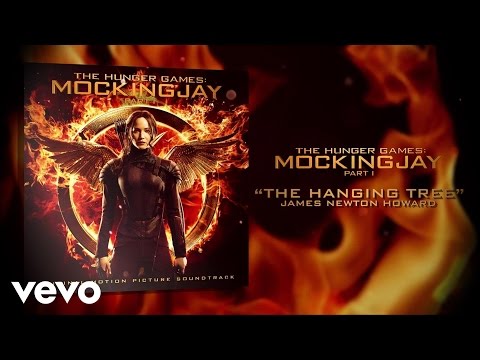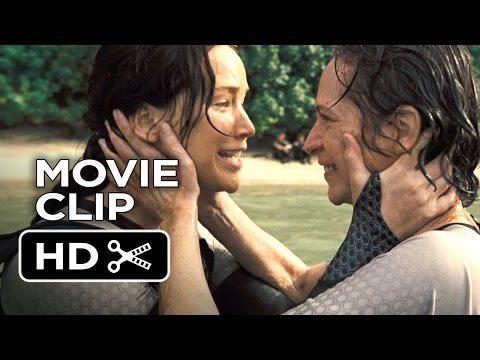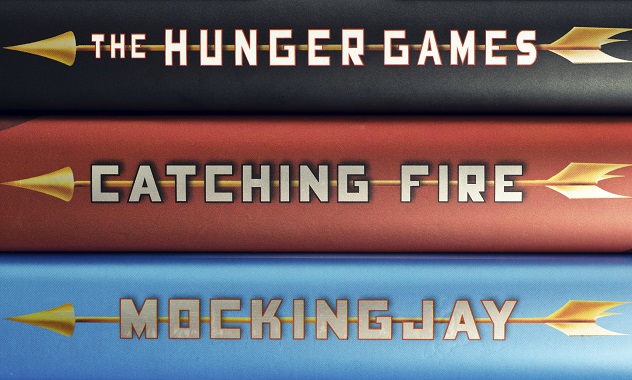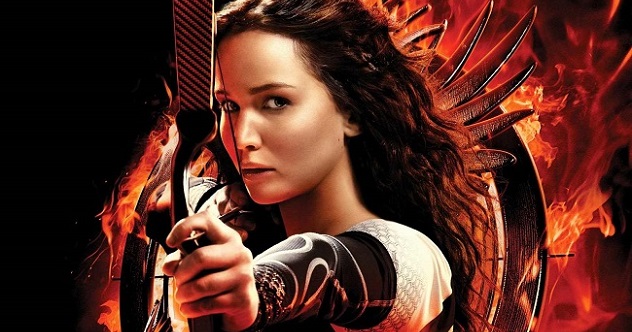10The Nation’s Name Is The Theme Of The Books
The world of The Hunger Games is filled with many interesting names though some are a bit on the nose, from the white-clad President “Snow” to a baker whose name is a homonym for “pita.” However, one clever name goes so far as to describe the entire theme of the series, and that’s the name of Suzanne Collins’s fictional nation: Panem. The name “Panem” reflects the Latin phrase made famous by Juvenal: panem et circenses. The phrase translates to “bread and circuses,” and it refers to how the Roman government distracted suffering farmers with public games and spectacles. Of course, this accurately parallels The Hunger Games world where the corrupt Capitol has been facing increasing unrest and placates individuals with the gory spectacle of the games. The incentive to win the games is, among other things, abundant food provided by the Capitol—the distant hope of “bread” to drown out the reality of mass poverty and starvation.
9Katniss Nearly Caused Worldwide Riots
The Hunger Games: Mockingjay–Part 2 was released worldwide in November 2015. However, two countries notably delayed the release of the blockbuster movie: China and Thailand. Why did these countries do this? According to The Washington Post, there were fears that Katniss Everdeen’s cry for rebellion against the government might send waves far beyond the silver screen. For example, The Post suggests Chinese censors feared a movie where a young woman urges the poor, oppressed outer colonies to rise up against the centralized totalitarian government which some suggest resembles Beijing’s relationship with its own distant provinces. In Thailand, things were a bit more obvious. Since the Thai government came into power via a military coup in early 2014, the movie has served as a rallying call for protesters. Accordingly, certain Bangkok cinemas canceled all screenings for the opening weekend. Around the same time, other protesters were arrested for flashing the three-fingered salute that Katniss famously associated with solidarity and resistance to corrupt governmental forces.
8Donald Sutherland Became President Snow Well Before Casting
Unless you’ve seen the films, it’s difficult to explain how much Donald Sutherland’s chilling performance as the ruthless President Snow helps to sell the Capitol’s decadence and the dystopia of Panem. Interestingly enough, however, Sutherland was already becoming this character well before he was cast! After reading the novels, Sutherland decided he wanted the role and pursued it in a very unconventional way. He wrote a very lengthy letter to Gary Ross (director of the first Hunger Games movie) entitled “Letters from the Rose Garden.” The letter detailed the mentality of President Snow as Sutherland sees it—that absolute power has not made him a “horny” despot but instead someone who channels his passion into his rose garden. In Sutherland’s letter, he made many connections between Panem and the real world, from his own fascination with the Sterling Silver rose of the 1970s to his own connection with Ted Bundy. Sutherland and his wife were driving through Colorado when Bundy escaped from jail. Sutherland recalled the radio warnings that Bundy looked like “the nicest young man imaginable.” He pictured Snow a bit like that—someone whose evil is primarily visible in his eyes but who appears normal and nice, a threat veiled with roses and smiles. Because of this letter, Sutherland not only got the part, but Ross added scenes of Snow in his rose garden. This motif continued throughout the next three Hunger Games films. And despite Ross not helming the remaining movies, the omnipresent threat of President Snow that he and Sutherland established continued to loom over the characters and the audience until the very end of the series.
7Jennifer Lawrence Likes To Talk Dirty
For someone playing characters who are often tough-as-nails, Jennifer Lawrence is usually imbued with that intangible girl-next-door quality that gives her the appearance of all-American girl innocence. Of course, that makes it shocking when both audiences and fellow cast members find out how much she loves talking dirty. Specifically, Lawrence is well-known for her foul mouth on the set of whatever film she’s working on. In attempt to counteract this, Francis Lawrence (director of Mockingjay–Part 1 and Part 2) instituted a swear jar on set. Unfortunately, it didn’t work. An unnamed cast member told The Sun that the jar had done nothing to keep Lawrence’s mouth at bay. In fact, she keeps the jar overflowing. This account is corroborated by her fellow X-Men star Michael Fassbender who punctuated a description of her “intelligent” wit and “natural intuition” by interjecting, “Oh, and she’s got a filthy mouth!”
6The Shaky Cam Was Meant To Freak You Out
One of the more controversial techniques in the modern director’s toolbox is the use of the infamous “shaky cam.” While ostensibly intended to give scenes (particularly action scenes) jolts of jittery realism, the end result is often a confused audience who can barely make out what’s happening. The first Hunger Games movie used shaky cam extensively, and many assumed it was an easy answer to the dilemma of basing an entire movie around teens murdering each other and still getting a PG-13 rating. It turns out, though, that there was a method behind director Gary Ross’s madness. Specifically, he intended the shaky cam to make audiences feel like they were in the shoes of Katniss Everdeen. In the novel, Ross felt the character is forced into a kind of “serpentine tunnel vision” in order to survive, and that author Suzanne Collins did this to further “destabilize” the reader. Thus, making extensive use of the shaky cam helped him agitate viewers—putting them “urgently” in her point of view—while making them feel cut off from the comforts of the real world as they’re forced to survive right alongside Katniss.
5Jennifer Lawrence Despises Her Own Famous Song
Jennifer Lawrence has wowed the entire world with her consistent quality as an actress. She can channel ruthless daring as easily as passion and humor. All of this acting talent at such a young age is no small feat . . . which is why many were shocked while watching The Hunger Games: Mockingjay–Part 1 to discover that she could sing, too! In the movie, Katniss Everdeen sings an a cappella song titled “The Hanging Tree.” The song went on to become a radio hit and played across the entire world. The punch line to all of this though is that Jennifer Lawrence hates singing, and she particularly hates that song. In an interview for HitFix.com, Lawrence described singing in front of others as her number one fear. She also said that when filming the song, she was shaking and wanted her mother. She claims that whenever she watches the movies, she actually plugs her ears during that scene so she does not have to hear her own singing voice.
4The Hunger Games Were Inspired By The Iraq War And Reality TV
Obviously, part of the charm of The Hunger Games series is that it’s not like anything audiences have seen before. However, according to author Suzanne Collins, the inspiration for her extraordinary tale is rooted in the grim realities of the modern world she saw around her every day. She described her inspiration for the novels as coming from a night of flipping through the television channels and discovering there was seemingly no difference in reality TV and the portrayal of the Iraq War. It occurred to her that the nonstop barrage of media was ultimately desensitizing audiences to the real horrors of things like war and death. Thematically, of course, this plays out in the novels and movies with the pleasure-hungry citizens of the Capitol seemingly oblivious to the lives taken for the sake of their entertainment. It’s not all hopeless though. Collins thinks her series can introduce the realities of war and death to younger audiences in the hopes it will create a dialogue about these issues and ultimately make the future a better place.
3Katniss Almost Died Offscreen, Too
Part of the thrill of watching The Hunger Games is seeing the sheer number of times that Katniss Everdeen escapes death. As it turns out, Jennifer Lawrence nearly died on set multiple times, with nary a Gamemaker in sight! Some of her injury highlights include missing a climbing cue and running straight into a wall. Another time, her repeated dips in the water on the oceanic sets of Catching Fire (as seen in the video above) resulted in ear infections. Of course, that was nothing compared to the time she swam too close to one of the underwater jets and punctured an eardrum, making her deaf for a month! Fittingly, her injurious antics amped up for Mockingjay–Part 1 when she was trapped within a tunnel full of so much fog that she choked on it, leaving her hacking long after she was freed. Finally, for Mockingjay–Part 2, Lawrence was taking her daily regimen of vitamins when she began choking. As she gagged, most crew members were completely frozen. Fortunately, Woody Harrelson noticed and slapped her on the back. When that didn’t work, he wrapped his arms under her chest and squeezed twice, expelling the vitamin. Lawrence, shaken, told Harrelson he had “literally” saved her life, and that she thought she “was gonna die right there.”
2The Hunger Games Books Are Banned Nearly Every Year
To look at the box office numbers, not to mention the sheer amount of merchandise waiting for fans’ wallets to volunteer as tribute, it’s easy to imagine The Hunger Games as a universally beloved franchise. However, the love is not that universal. Nearly every single year, the books are banned by educators. Some of the complaints against the first Hunger Games book included that it was “sexually explicit,” “unsuited to age group,” and full of “violence.” As the sequels came out, the complaints got more specific, including accusations that the books were “anti-ethnic,” “anti-family,” and even full of “occult” and “satanic” imagery. Collins was apparently bemused by some of the criticism, particularly the claims about it being too violent. “They are violent,” she responded. “It’s a war trilogy.” Interestingly enough, by challenging the book so thoroughly and consistently, these critics and educators have put The Hunger Games in very good company. The series stands alongside classics like Aldous Huxley’s own dystopian novel Brave New World (challenged for everything from its sexual explicitness to its insensitive religious views) and Harper Lee’s To Kill a Mockingbird (challenged for its racism and offensive language). On such shoulders, the Mockingjay is poised to fly much higher than her petty critics.
1The Hunger Games Movies Are The Ultimate Political Mirror
One of the most interesting things about The Hunger Games’ vision of a tyrannical world full of plucky rebels is that the novels and movies ultimately serve as a political mirror for whatever audiences wish to see. That is, while Collins has openly spoken about her thoughts on violence, war, and the desensitizing effects of the media, the actual characters and events of the story allow very different groups to interpret the series in very different ways. For instance, left-leaning individuals such as Flavorwire writer Sarah Seltzer believe the novels and movies speak out against “state-inflicted violence” and the “hunger caused by gross economic inequality.” She saw a message very reminiscent of the Occupy movement—a series with a desire to fairly redistribute wealth. However, Tea Party members and other conservatives saw the movie quite differently. Breitbart writer John Nolte saw Mockingjay–Part 1 as coming at “the exact right time” because it was a movie “about a revolution against a lying, lawless president.” He saw President Snow as a clear analogue to President Obama. Of course, this seemed absurd to the actual President Snow—that is, Donald Sutherland. He first dismissed the idea that anyone could see Snow as Obama before dropping his own partisan bombshell. “The Tea Party doesn’t look at Barack Obama as a dictator,” Sutherland told ScreenRant. “They look at Barack Obama as a black man in the White House. [ . . . ] That’s what generates their hatred.” This complete dismissal of millions of people aside, the debate continues. And of course, that’s part of the genius of both the narrative and Katniss herself. She has transcended specific context and become an icon for resistance against tyranny in all of its forms. @PocketEpiphany is still waiting for Cinna to design him something, dammit.

